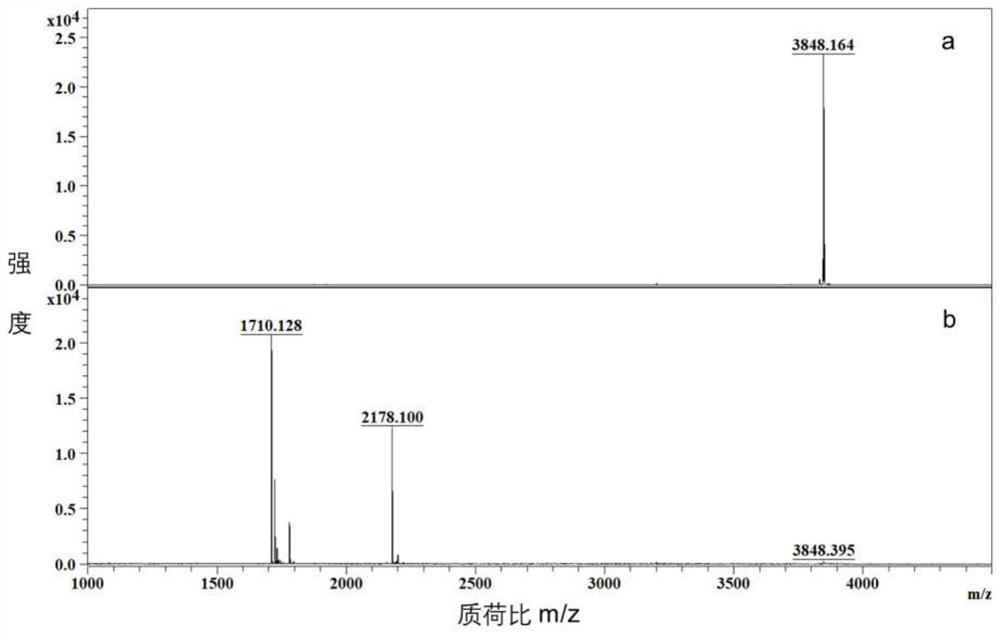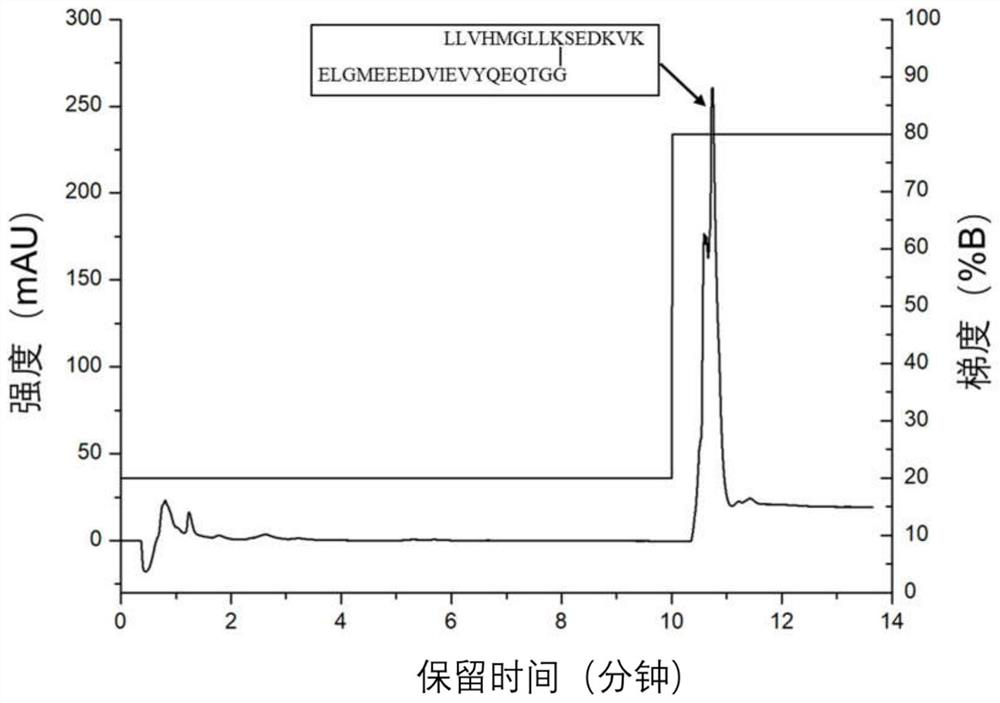A method for enrichment of sumoylated peptides based on de-sumoylase and sax
A peptide and enzyme technology, applied in the field of enrichment of SUMOylated peptides, can solve problems such as the inability to accurately reflect the real modification state of proteins, and achieve the effects of improving identification coverage, high enrichment selectivity, and promoting efficient removal.
- Summary
- Abstract
- Description
- Claims
- Application Information
AI Technical Summary
Problems solved by technology
Method used
Image
Examples
Embodiment 1
[0037] like figure 1 As shown in the figure, the basic site of the protein is first digested, and then the N-terminus of the peptide and the free amino group of the side chain are blocked at the peptide level. The retention in anion exchange chromatography is stronger than that of non-SUMOylated peptides, so anion exchange chromatography is used to pre-enrich the SUMOylated peptides with strong retention, and then the collected SUMOylated peptides are used to remove SUMOylase After de-SUMOylation, the retention of the peptides after de-SUMOylation in anion exchange chromatography is weakened, so that the enrichment of SUMOylated peptides is achieved in the second anion exchange chromatography.
[0038] Take the SUMO1 standard peptide with the sequence ELGMEEEDVIEVYQEQTGG(19)-LLVHMGLLKSEDKVK(9) as the sample, dissolve it in 50mM ammonium bicarbonate, and digest it with the de-SUMOylase SENP1, where the amount of enzyme is 1 / 20 of the sample mass, and the temperature is After e...
Embodiment 2
[0040]Redissolve 10 μg of SUMO1 standard peptide in phase A, load the sample into a tertiary amine ion exchange column (4.6 mm i.d × 5 cm) for isocratic elution, elution gradient (V / V): 0-10 min, 20% B; 10-20 min, 80% B, flow rate 1.0 mL / min. Phase A: 20% acetonitrile + 1 mM pH 8 Tris buffer; Phase B: 20% acetonitrile + 1 mM pH 8 Tris buffer + 500 mM sodium chloride. like image 3 As shown, after the unretained fractions 10 min before elution, the fractions containing the SUMO1 target peptide after 10 min were collected, desalted, and lyophilized. After redissolving in 0.1% formic acid, mass spectrometry analysis showed that the SUMO1 standard peptide was effectively retained and enriched in anion exchange chromatography.
Embodiment 3
[0042] 10μg of SUMO1 standard peptide fragment was digested with de-SUMOylase and loaded onto a tertiary amine ion exchange column (4.6mm i.d×5cm) for isocratic elution, elution gradient: 0-10min, 20%B; 10-20 min, 80% B, flow rate 1.0 mL / min. Phase A: 20% acetonitrile + 1 mM pH 8 Tris buffer; Phase B: 20% acetonitrile + 1 mM pH 8 Tris buffer + 500 mM sodium chloride. like Figure 4 As shown, the unretained fractions in the first 10 min and the retained fractions after 10 min were collected, demineralized, and lyophilized. Redissolved in 0.1% formic acid, and subjected to mass spectrometry analysis, the de-SUMOylated peptide LLVHMGLLKSEDKVK after being digested by de-SUMOylase did not retain efflux in anion exchange, the original SUMO1 standard peptide and the peptide obtained after digestion ELGMEEEDVIEVYQEQTGG still remained in the anion exchange, indicating that the effective enrichment and identification analysis of SUMOylated peptides was successfully achieved.
PUM
 Login to View More
Login to View More Abstract
Description
Claims
Application Information
 Login to View More
Login to View More - R&D
- Intellectual Property
- Life Sciences
- Materials
- Tech Scout
- Unparalleled Data Quality
- Higher Quality Content
- 60% Fewer Hallucinations
Browse by: Latest US Patents, China's latest patents, Technical Efficacy Thesaurus, Application Domain, Technology Topic, Popular Technical Reports.
© 2025 PatSnap. All rights reserved.Legal|Privacy policy|Modern Slavery Act Transparency Statement|Sitemap|About US| Contact US: help@patsnap.com



